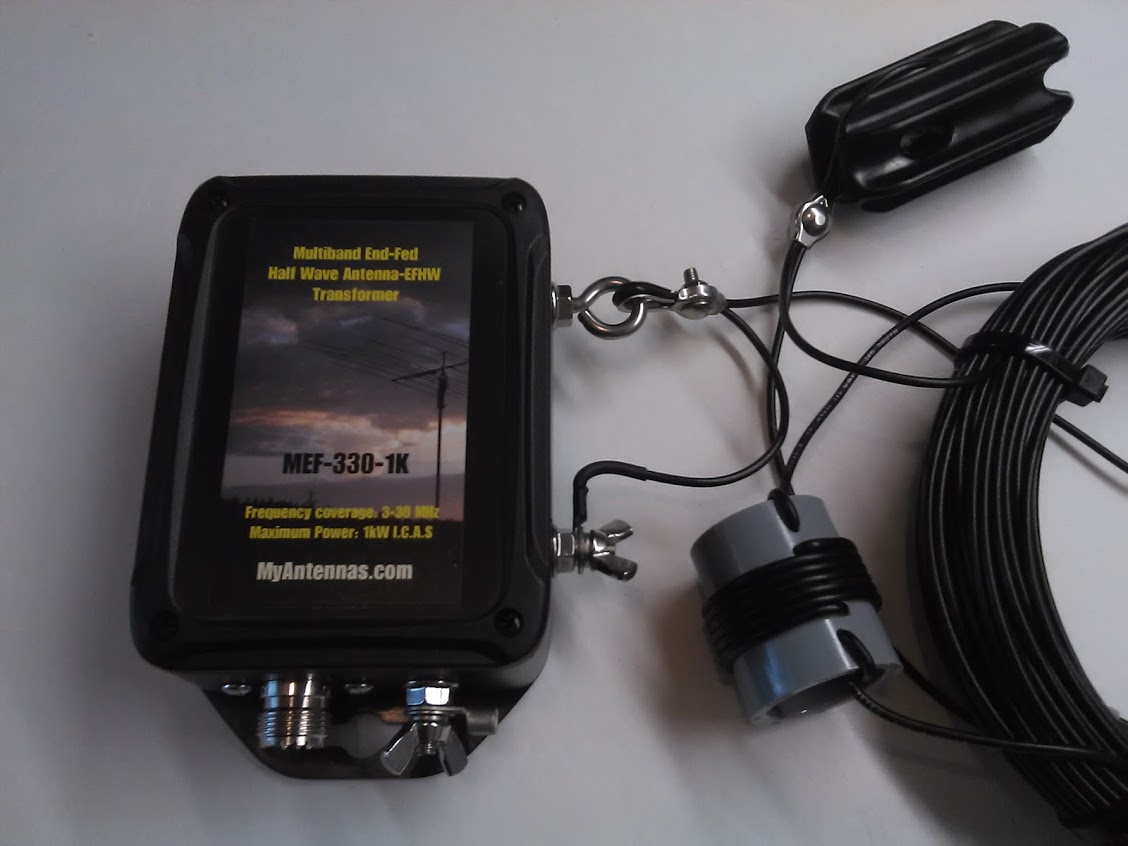
Is this the ultimate ‘magic’ antenna for HF? This is the question I found at some forum topic named “Smoke and mirrors, or electro-magic”
Well, until all popular antennas such as G5RV, ZS6BKW, CHA-250, 43-foot verticals, End Fed long wire with 4:1 or 9:1 UNUNs, Open wire Doublets, Skyloops, etc. magically evolve into 8 band resonant antennas with VSWRs of 2:1 or better across all 8 bands, with matching loss (insertion transformer loss) averaging at -0.66dB from 80 thru 10m….then…
YES! EFHW-8010-1K is the ultimate MAGIC antenna!
There is no BIG secret about the EFHW-8010 antenna, it is just a wideband low loss transformer and a piece of wire. Yes, there is a coil a few feet from the box but it is NOT TRAP, it is no secret as well, actually, everything in this antenna was published and patented by few people a long ago. First, my countrymen, Nikola Tesla patented this transformer almost 120 years ago in 1897, then another HAM, Josef Fuchs, OE1JF patented a half-wave radiator with a variation of the Tesla transformer almost 88 years ago in 1928.

Various versions of End Fed Half Wave-EFHW dipole antennas ( some with a very high matching loss) were introduced by radio amateurs in the last 80 years including mine with the best-designed broadband transformer and “Compensating” coil. This small coil is almost invisible at 80 and 40m bands but due its position and value make a nice impact on the current distribution on high bands.
For example, an EFHW-8010 antenna is half-wave resonant on 3.6MHz, it’s fundamental 8th harmonic is 28.8MHz but due to the Velocity of wave propagation on copper wire (with insulation) and “end effect” ( first and last half-wave sections), the real 8th harmonic is above 28.8MHz. The same applies to the 7th harmonic at 25.2Mhz and the 6th harmonic at 21.6MHz.
Well, this small coil makes the wire look longer on high bands, therefore moving a resonant point of 6th, 7th, and 8th harmonic within amateur radio bands. Simple and effective. Oh, by the way, I was not even born when this technique was published in many amateur radio publications. I simply love to implement known old techniques into new designs. It was published in Karl Rothammel’s antenna book, DM2ABK, Y21BK.
So, in the end, I am sometimes puzzled how HAMs tend to glorify some mediocre antenna designs but quick to dismiss good ones. I wonder what would be the next big mystery about the EFHW-8010 antenna. I guess it is time for a “Counterpoise” mystery. In the meantime ask yourself (and Google), does a resonant circuit such as half-wave resonator needs “extra circuit/counterpoise” to operate.
Stay tuned!
73 Danny Horvat, N4EXA aka E73M
